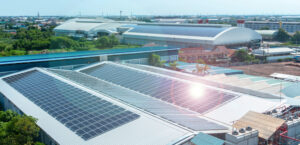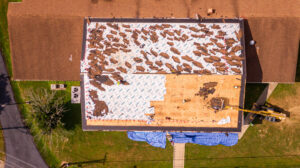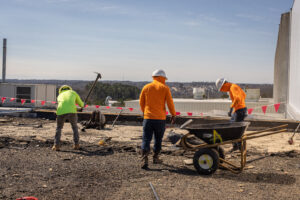If you own a business, it’s likely that you’re always looking for ways to save money. And if you operate from a commercial building, why not add some solar panels to your roof? It’s a smart way to reduce your energy costs over the long term and be the early adopter of exciting future technology.
Solar Panels For Commercial Use are a Smart Way to Stay Ahead of The Competition.
As the time of limiting CO2 release nears, more and more environmental agencies are looking for ways to reduce their reliance on fossil fuels and become more sustainable. The cost of using electrical energy from fossil fuels is likely to rise as the world moves away from them and regulations are put in place to limit their use.
Solar panels can completely offset your reliance on the grid or at least supplement enough to reduce your monthly energy costs. Your business will stay ahead by investing in this new technology now and being able to use less expensive, sustainable energy in the future.
Are Solar Panels Worth It for Commercial Buildings?
Here’s why it’s worth it to install solar panels on your commercial building:
- Solar panels made today are far more efficient than those made even a few years ago. The cost of solar panels has significantly dropped in the last few decades. Solar panel technology keeps improving, making them an increasingly attractive investment.
- The initial investment is the only cost. Solar panels have a relatively lengthy lifespan, so you can expect to get decades of use out of them. All the energy you get from them is free once they’re installed.
- Solar panels can increase the value of your commercial building. If you ever intend to sell your commercial space, having solar panels installed will make your building more attractive to prospective purchasers who are looking for a property with sustainable features.
- Solar panels can help you get LEED certification for your commercial building. LEED, abbreviated as Leadership in Energy and Environmental Design is a certification given to buildings that meet specific standards for sustainability. Solar panels are one of the elements that can help your building qualify.
- Take Advantage of Govt Incentives. The federal government offers tax credits for businesses that install solar panels. In addition, many states offer additional incentives, like grants or rebates, to help offset the cost of installation.
Case Studies
- Case Study #1: A large commercial business in Nashville, TN, wanted to reduce its carbon footprint and save money on electricity costs. Our company installed solar panels on the roof of one of their office buildings, which took around six weeks to complete. After the installation was complete, the company saw an annual savings of $4,000 in electricity costs, which is a reduction of about 20% over their previous electric bill before installing solar panels!
- Case Study #2: A small retail store in Knoxville installed 175 square feet of solar paneling on their roof and saw an annual savings of $800. This translates into an 80% reduction in their electric bill!
Which Commercial Roofs Are Ideal for Solar Panels?
The best-suited roofing type for solar panels is a flat roof. This is because the solar panel system will need to be mounted on the roof, and a flat surface will provide the best stability for the system. However, if your commercial building has a sloped or pitched roof, you may still be able to install solar panels with proper support.
The Roof compatibility with solar panels mainly depends on
- Material: Metal roofs are the best type of roofing for solar panels, as they provide a stable and durable surface on which to mount the system. Metal roofs also don’t degrade in the sunlight like other roofing materials, so you won’t have to worry about the panels becoming less effective over time.
- Age: Solar panel systems can be installed on both new and old roofs. However, it’s crucial to get your roof repaired or replaced if it’s beginning to show indications of deterioration before you put in solar panels. This is because the solar panel system will add weight to the roof, which could cause further damage if the roof is not in good condition.
- Orientation: The best orientation for solar panels is south-facing, as this will maximize the amount of sunlight that the panels receive. However, if your roof doesn’t have a south-facing orientation, you can still install solar panels and benefit from the electricity savings.
- Shading: Shading is one of the biggest factors that can affect the performance of solar panels. If your roof has a lot of shadowing from nearby trees or other buildings, the panels won’t be able to get enough sunlight to generate electricity.
- Size: The number of solar panels that can be installed on your roof will depend on the size of the roof. If you have a small roof, you may only be able to install a few panels. However, if you have a large roof, you could install dozens of panels and generate a significant amount of electricity.
- Slope: Generally, solar roofing is performed on roofs with a slope between 15 and 60 degrees. However, a certified roofing contractor will be able to install solar panels on most types of roofs.
Benefits and Drawbacks of Commercial Solar Panels
Solar panels for commercial buildings have their pros and cons, just like any other product.
- Benefits
Installing solar panels is a great method to reduce your electricity costs. They will pay for themselves in the long run, so it makes sense to invest in them if you’re planning on staying at your company’s office for a while. Solar energy is also renewable, which means there will always be a supply of it—unlike fossil fuels like coal or oil that eventually run out when used up. This makes solar power sustainable as well as cost-efficient!
- Disadvantages
While solar energy can save you money on your electricity bill, it takes time and effort to get started with this type of system in place before you see any benefits from it. It’s also not ideal for people who live in areas where there aren’t many sunny days per year because this type of system relies heavily on sunlight as its main source of power generation (rather than burning wood).
How Much Does it Cost to Install a Commercial Solar Roofing System?
The cost of installing a commercial solar panel system depends on the size of the system and the location. The average cost for installation can range from $2,000 to $500,000. The most expensive part of installing a commercial solar panel roofing system is the typical installation.
How Much Power Does a Commercial Solar Panel Generate?
Solar panels generate power from the sun. They’re measured in watts (W), kilowatts (kW), and megawatts (MW). A solar panel can generate anywhere between 0.5 and 1 kW of electricity per hour on a sunny day, depending on its size and quality.
The benefits of solar panels for commercial buildings are clear. With installation costs set to drop by more than half in the next five years, now is an ideal time to invest in a solar system for your business. For more information on how much power a commercial solar panel generates and what type of roofing will work best with them, visit us online.






